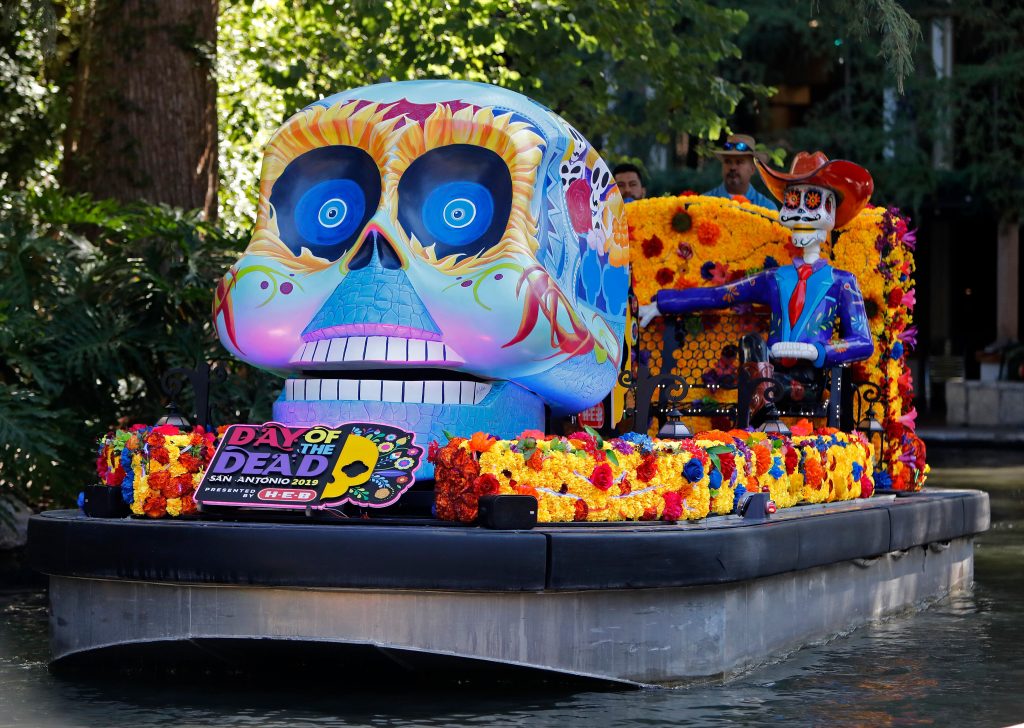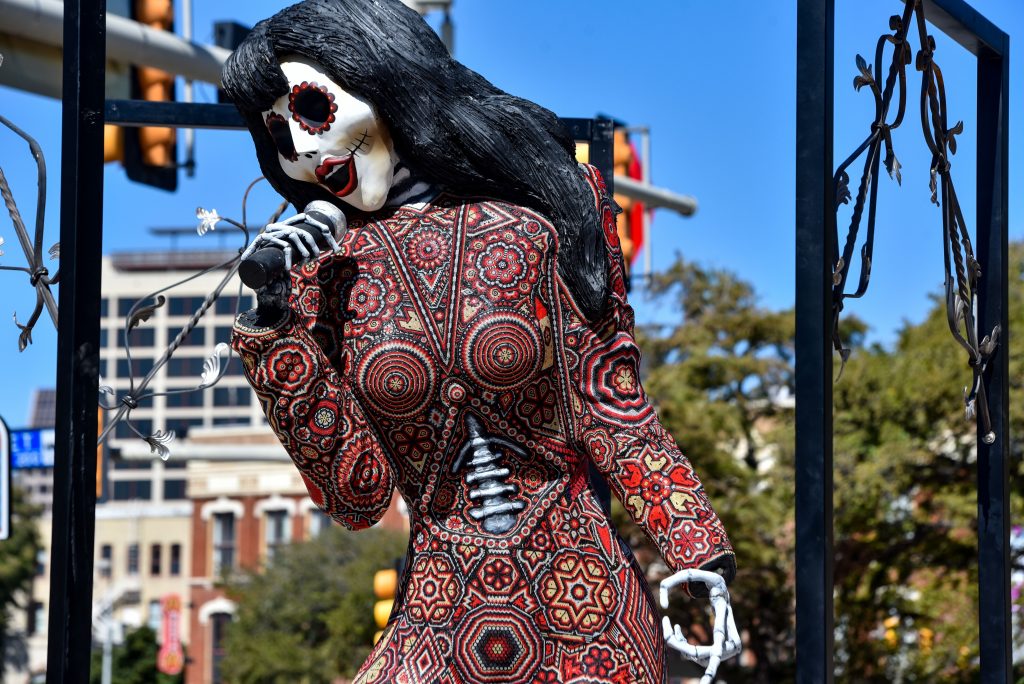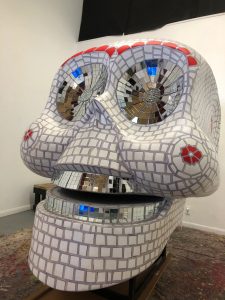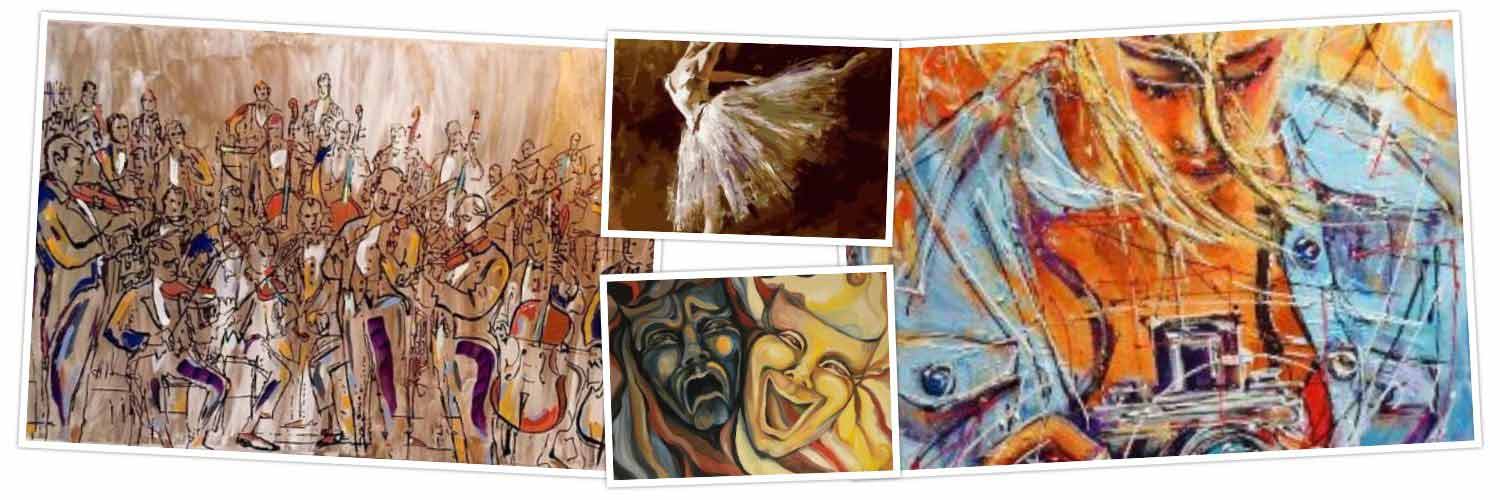New Day of the Dead Fest to Light Up Downtown
By JASMINA WELLINGHOFF, Editor —
On the evening of Oct. 28, a group of invited guests and media folks gathered at the Briscoe Western Art Museum to see a rather unusual exhibit. Titled Almas Creativas: A Tribute to Mexican Huichol Art, the show consists of giant skulls (calaveras) and sculpted human figures/skeletons (catrinas) clad in densely beaded attires that took artisans months to complete. Each piece features more than two million beads. The Huichol are descendants of the Aztecs who live in the mountain villages of the Mexican states of Jalisco and Nayarit.

The most striking figure in the gallery is the catrina of Frida Kahlo, shown with a monkey on her back, probably an allusion to the physical and health struggles she dealt with for most of her life. Other catrinas represent Mexican movie star Maria Felix and Kahlo’s life partner, artist Diego Rivera. Together, the calaveras and catrinas embody traditional symbols of Dia de Los Muertos, a cultural tradition that goes back to pre-Columbian times, which eventually blended with the Christian custom of remembering the dead in early November.
Part of the Day of the Dead San Antonio, a new festival that celebrates Dia de los Muertos on a much grander scale than ever before, the Briscoe exhibit is a must-see.

Addressing the assembled at the museum, UTSA professor emerita, Ellen Riojas Clark, acknowledged the typical American discomfort with death and dying, contrasting it with the way Mexican culture deals with this inevitable part of human life – with acceptance, love and even humor.
“The remembrance of the departed loved ones is traditional in many diverse cultures around the globe,” she said. “It should be seen as part of the spiritual and social tradition of a community… It’s a day to celebrate that the souls of the departed are welcomed back among the living for a short while… It’s a day of joy… that allows the living to share the love for the departed, not in a solemn fashion, but in a joyous, festive way.”
The producers of the new fest clearly agree. The idea of launching a city-wide celebration is a brainchild of businessman Javier Ruiz Galindo, who produces worldwide events that promote Mexican culture and heritage, most recently during the World Cup games. To make his dream a reality, Galindo partnered with chef Johnny Hernandez of La Gloria fame, who agreed to co-produce the new fest. Both the city of San Antonio and Visit San Antonio, supported the project and H-E-B became the sponsoring entity. Everyone hopes that national press coverage will have a positive impact on San Antonio tourism.
The Briscoe exhibit is just one of the many events, spread over a number of days. So, get ready to commemorate the dead with fun, joy and laughter!

Official opening ceremonies are scheduled for Nov. 1, at 7 p.m., at the Arneson River Theater, to be immediately followed by a river parade dubbed Catrinas on the River, featuring 22 barges that glide like the “colorful, flat-bottomed trajineras in Xochimilco,” a UNESCO World Heritage Site south of Mexico City. Musicians, roving dancers and strategically placed calaveras will all be part of the festive night.
Then the fun moves to La Villita for more activities, music, food, performances and shopping (6 – 11 p.m. Friday-Saturday, noon-6 p.m. Sunday).

Organizers were smart to ask local artists, such as Andy Benavides, Joe de la Cruz, Alex Rubio, Regina Moya, Christina Noriega and others, to contribute their visual ideas and interpretations to the proceedings. The large calaveras they made decorate Houston Street, La Villita and other popular spots in and around downtown. These may be very different from the beading art of the Huichol but they keep the holiday’s traditions alive by introducing original images and contemporary artistic aesthetics.

For Benavides, working on his 6-foot tall calavera was a time to engage in reflection. “It took me 40 hours to paint it, and painting is a meditative process anyway. I used the time to reflect on the people I lost, my mom, my dad and my brother, “he said. “I was painting something to honor the deceased, so I started thinking of them and honoring them.” He drew inspiration from Mexican folk art, imagining the skull like a small object that could have been found in someone’s backyard, perhaps a relic or indeed a piece of folk art. “Then I made it much larger in scale,” he explained. “The eyes and teeth are made out of mirrors and I painted it to look like a mosaic.” The work has been installed in the central courtyard area of the Pearl Complex, where it tempts people to touch it because it looks like the surface is covered with small tiles, he noted.
Another invited artist, Christina Noriega, wanted to connect her calavera to San Antonio, and, as it turned out, to her own family’s history. She wanted to depict labor leader Emma Tenayuca who led the 1938 strike of pecan shellers in the city. Her own grandmother, Anita Sosa, had been one of those hard-working, poorly paid shellers, but rarely spoke about that part of her life. What Noriega knows about her grandmother’s experience mostly came later, from her father, Anita’s son. So, her almost 7-foot tall skull shows Tenayuca on one side and the striking workers on the other, which, she said, she painted from original photographs. And like Benavides, she felt like she was honoring her ancestor as well as Tenayuca. Her piece will be displayed in La Villita, near the Little Church of La Villita. “It was a challenge, it was fun, and it was meaningful,” she said.
Yet another San Antonio connection will be easy to spot downtown: a huge 8-foot catrina statue of Selena which stands at the corner of S. Alamo and Market streets. But this one was not made by a San Antonio artist. The remarkable figure is the work of the same Huichol artisans shown at the Briscoe. Reportedly, two million beads were used to decorate her dress.
Additional Events: The Witte Museum is presenting Mythical Alebrijes, a series of carvings depicting animals, objects and imaginary creatures, most by Mexican artist Jacobo Angeles. This is a special Day of the Dead exhibit so it won’t last long.
Celebrating Life 5K Race: It starts at 8 a.m. Nov. 2, at Mission Park Funeral Chapels & Cemeteries South. Kids can join, too, in their own race. There will be a “memory wall” where participants can speak about loved ones, they are honoring by running in this race.
For more information go to dodsat.com. Admission is charged for La Villita visits and some other events.
Other celebrations in town:
Centro Cultural Aztlan, which initiated the public commemoration of the dead in San Antonio, will once again have its Altars and Ofrendas exhibit opening Nov. 2, noon-10 p.m. The exhibition closes Nov. 15.
Guadalupe Cultural Arts Center, invites the community to join its workshops and altar exhibit in the Galeria Guadalupe, 723 Brazos St., the evening of Nov. 1.
Market Square (514 W. Commerce) is famous for its lively offerings – altars to honor the departed and processions; Nov. 1, 4 p.m.; Nov 2-3, 11 a.m. to 6 p.m.
